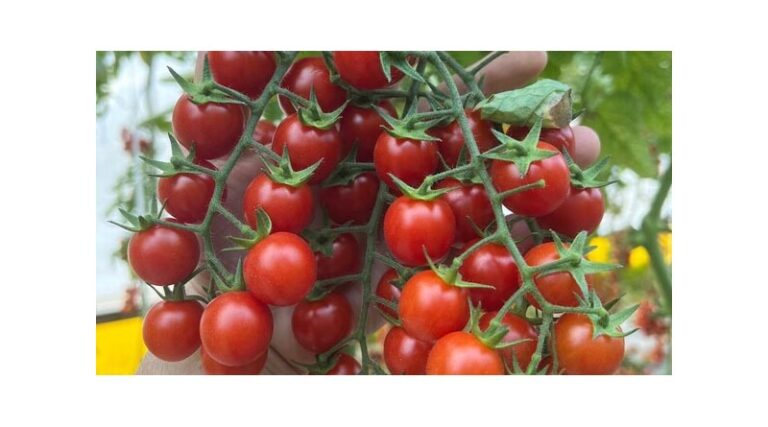
Branching Out: Tomato Genes Point To New Medicines
10 July 2025, NY: Picture juicy red tomatoes on the vine. What do you see? Some tomato varieties have straight vines. Others are branched. The question is why. New research from Cold Spring Harbor Laboratory (CSHL) provides the strongest evidence to date that the answer lies in what are called cryptic mutations. The findings have implications for agriculture and medicine, as they could help scientists fine-tune plant breeding techniques and clinical therapeutics.
Cryptic mutations are differences in DNA that don’t affect physical traits unless certain other genetic changes occur at the same time. CSHL Professor & HHMI Investigator Zachary Lippman has been researching cryptic mutations’ effects on plant traits alongside CSHL Associate Professor David McCandlish and Weizmann Institute Professor Yuval Eshed. Their latest study, published in Nature, reveals how interactions between cryptic mutations can increase or decrease the number of reproductive branches on tomato plants. Such changes result in more or fewer fruits, seeds, and flowers. The interactions in question involve genes known as paralogs.
“Paralogs emerge across evolution through gene duplication and are major features of genetic networks,” Lippman explains. “We know paralogs can buffer against each other to prevent gene mutations from affecting traits. Here, we found that collections of natural and engineered cryptic mutations in two pairs of paralogs can impact tomato branching in myriad ways.”
One crucial component of the project was the pan-genome Lippman and colleagues completed for Solanum plants around the globe, including cultivated and wild tomato species. Where genomes typically encompass one species, pan-genomes capture DNA sequences and traits across many species. The pan-genome pointed Lippman’s lab toward natural cryptic mutations in key genes controlling branching. Lippman lab postdoc Sophia Zebell then engineered other cryptic mutations using CRISPR. That enabled Lippman’s lab to count the branches on more than 35,000 flower clusters with 216 combinations of gene mutations. From there, McCandlish lab postdoc Carlos Martí-Gómez used computer models to predict how interactions between specific combinations of mutations in the plants would change the number of branches.
“We can now engineer cryptic mutations in tomatoes and other crops to modify important agricultural traits, like yield,” Lippman says.
Additionally, the kind of modeling done here could have many other applications. McCandlish explains: “When making mutations or using a drug that mimics the effects of a mutation, you often see side effects. By being able to map them out, you can choose the manner of controlling your trait of interest that has the least undesirable side effects.”
In other words, this research points not only to better crops but also better medicines. So, you see tomatoes? Science sees tomorrow.
Also Read: SML Limited Introduces SML Biologicals with StellarOn Registration and Rootiva Launch
📢 If You’re in Agriculture, Make Sure the Right People Hear Your Story.
From product launches to strategic announcements, Global Agriculture offers unmatched visibility across international agri-business markets. Connect with us at pr@global-agriculture.com to explore editorial and advertising opportunities that reach the right audience, worldwide.






